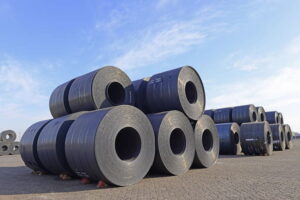
ArcelorMittal Poland has reduced its pig iron and steelmaking capacities by little over a third each with the recent closure of its blast furnace and three basic oxygen furnaces in Krakow, according to S&P Global Platts calculations based on company results statements and market sources.
However, sources said Oct. 27 that the actual loss of output to the company — which comprises mills in Krakow, Swietochlowice and Dabrowa Gornicza — could in fact be somewhat smaller, at around a quarter, given that the BOFs in Krakow had been running at less than half their full capacity over the last decade, producing 1.2 million mt/year on average between 2010 and 2019.
ArcelorMittal does not disclose the furnace capacities of individual units, but the company’s factbook for 2014 says the Krakow site was equipped with 2.3 million mt/year BF and 2.6 million mt/year BOF capacities.
Dabrowa Gornicza has BF capacity of 4.4 million mt/year, and steelmaking capacity of 5 million mt/year, according to the same factbook.
According to sources, the Krakow BF and BOFs were among its oldest, with little in the way of upgrades over recent years.
“It could have been a choice between [downsizing in] Poland and France. Obviously, it is easier and cheaper to close an industrial enterprise and dismiss workers in Poland due to the country’s more liberal labor legislation,” one source said.
An ArcelorMittal spokeswoman told S&P Global Platts that a number of different factors contributed to the decision, including high energy costs and the introduction of additional capacity market fees in Poland from January 2021.
Low capacity utilization of the Krakow hot end could also be one of the reasons., sources said.
Last year, ArcelorMittal Poland made 4.8 million mt of steel. Its production fell by 0.5 million mt or 9.5% on the year due to the idling in November of the Krakow’s furnaces amid the demand downturn.
In the five years to 2018, ArcelorMittal Poland’s annual steel production averaged 5.25 million mt/year, or around 70% of the unit’s 7.6 million mt/year capacity.
Of the two steelworks, Krakow had been least utilized relative to its nameplate capacity. In the same period, with average crude steel output of 1.4 million mt/year, the plant’s run rate hardly exceeded 55%.
By comparison, Dabrowa was producing 3.9 million mt/year in 2014-18, the equivalent of 78% of its 5 million mt/year crude steel capacity.
— Ekaterina Bouckley





